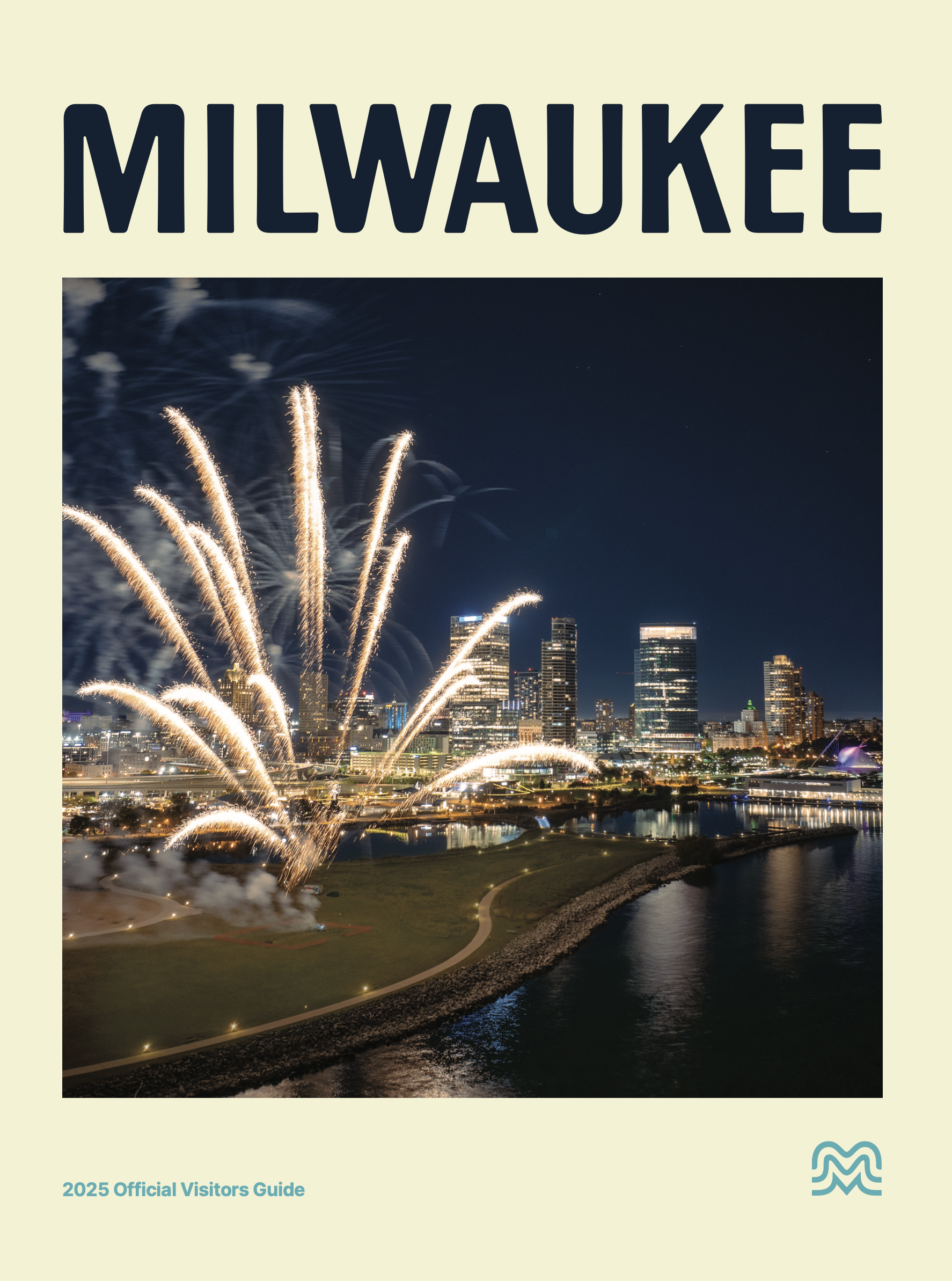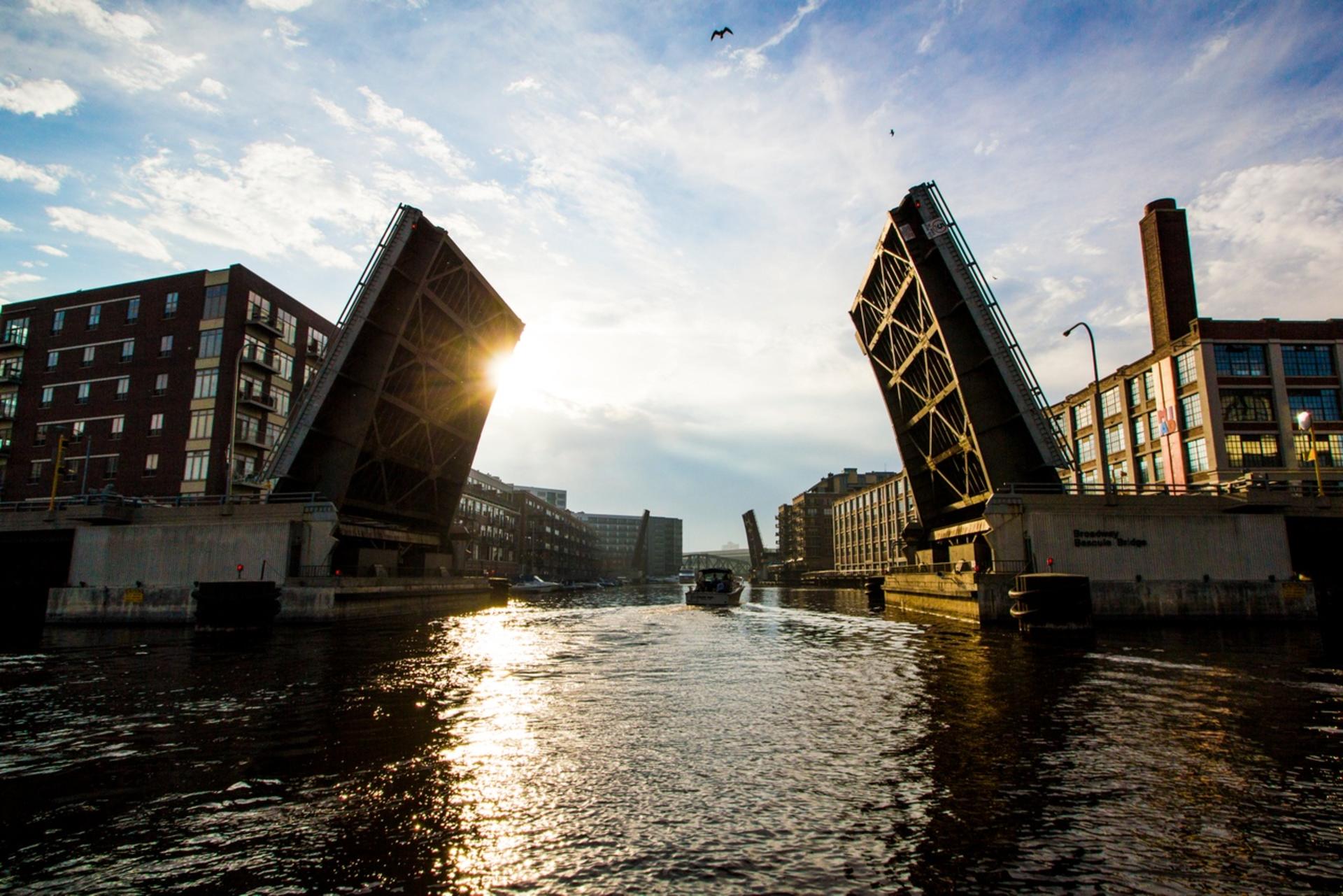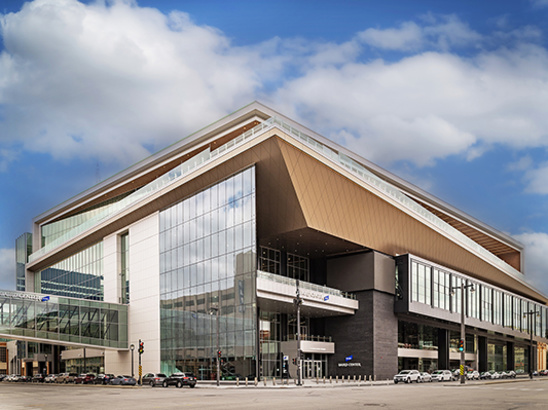How one of the city's European founders returned to Milwaukee from beyond the grave.
Truth is often stranger than fiction, but long-time VISIT Milwaukee volunteer Frank Matusinec has a tale to tell that borders on science fiction. At a volunteer appreciation event in the summer, the 25-year vet shared his harrowing story of traveling cross-country with the late Byron Kilbourn to bring the Milwaukee legend back home to his rightful final resting place in Forest Home Cemetery.
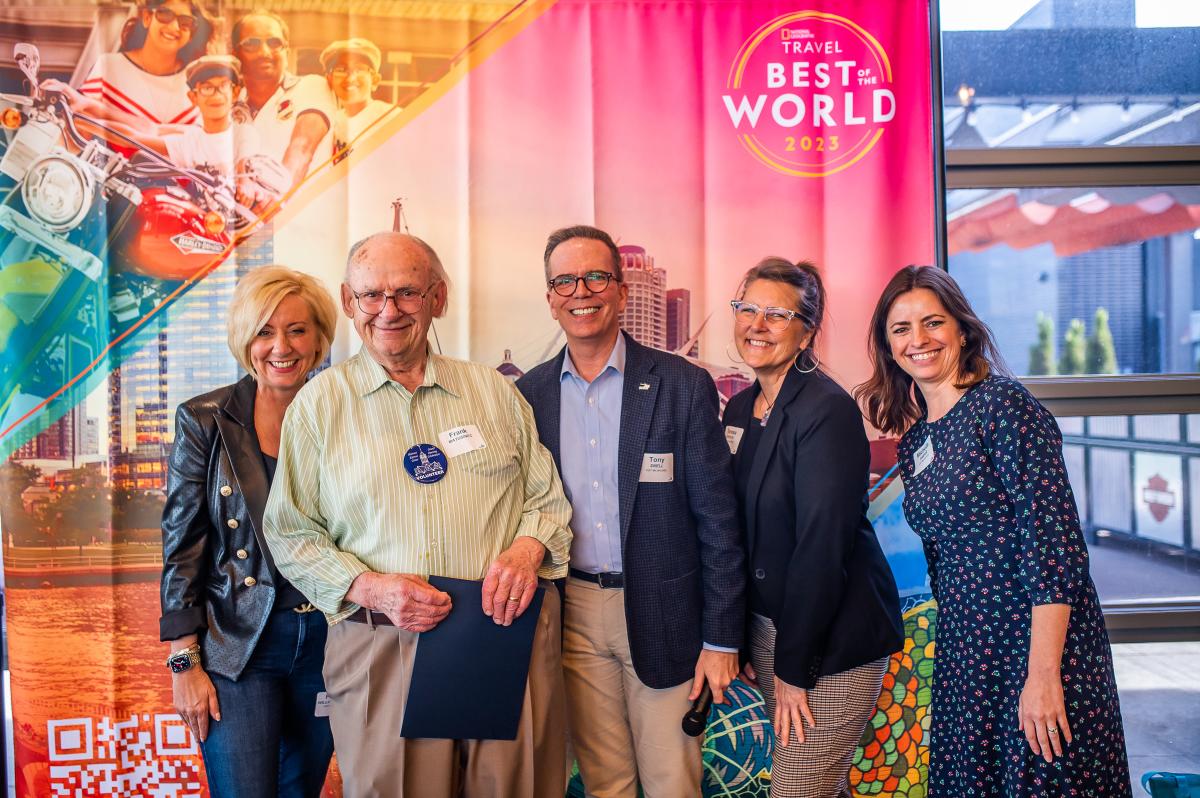
(Frank Matusinec with VISIT Milwaukee staff at the company's 2023 National Travel & Tourism Week Volunteer Celebration)
Officially returning one of the foundational figures to the Cream City on December 16, 1998, Milwaukee’s prodigal son celebrated the 125th anniversary of his passing with a graveside ceremony featuring Mayor Norquist, alongside a cast including city officials, The Masons and, of course, a bagpiper to give Kilbourn one final farewell.
On the 25th anniversary of Kilbourn’s return to the Good Land, we sat down with Frank to relive the whimsical cross-country odyssey.
 A little about Byron Kilbourn. Kilbourn’s place in the making of Milwaukee is rivaled only by his non-metaphorical rival, Solomon Juneau. A trailblazer in the city’s history, Kilbourn was a key catalyst to the growth of the Good Land. His development of the West Side played a key part in the flourishing and vibrant city Milwaukee is today. He’s also partially responsible for why many of the city’s bridges are crooked. Fueled by his rivalry with East Side developer Solomon Juneau, Kilbourn and Juneau intentionally laid out the street grids such that they would not align.
A little about Byron Kilbourn. Kilbourn’s place in the making of Milwaukee is rivaled only by his non-metaphorical rival, Solomon Juneau. A trailblazer in the city’s history, Kilbourn was a key catalyst to the growth of the Good Land. His development of the West Side played a key part in the flourishing and vibrant city Milwaukee is today. He’s also partially responsible for why many of the city’s bridges are crooked. Fueled by his rivalry with East Side developer Solomon Juneau, Kilbourn and Juneau intentionally laid out the street grids such that they would not align.
As for Frank, the journey was its own reward. A life-long history buff and lover of Milwaukee, when asked about his motivation, he says simply, “It just felt like the guy should be back here, you know?”
It started [as] a tour guide with historic Milwaukee. I was part of the original class. There was just a new book written by Goodwin Bergquist and Paul C. Bowers. The book had just been published and the Historical Society had had [Bergquist] come down and talk about his new book. So, I thought, well, I really don't know a lot about Byron Kilbourn, and he’s never been talked about very much.
I went to the lecture, and I mentioned to Sandy Ackerman, who at the time was head of historic Milwaukee, “You know, Sandy. We should do is we should really get Kilbourn back here. He belongs here. Walker’s here. And Juno's here and he's missing.”
And she said, “Yeah, Frank, why don't you do that?” You know, you should never volunteer. I was in the Army, and I should know better,” Frank laughs.
But I just did. It was just the thing to do. I met someone named Tom Wiseman, who had just moved bodies from the old Fairview Mausoleum over to Valhalla Cemetery. I thought, well, this guy knows how to handle dead bodies who've been, you know, been around a while. I stopped in to see him and he was excited about it.
And so, Frank’s adventure to retrieve one of Milwaukee’s prominent members, integral in the growth of Milwaukee led him to Jacksonville Florida. Tom had a contact in Jacksonville willing to help exhume Kilbourn’s casket and Tom would be happy to help him once Kilbourn made return to the Cream City, but it would be both the responsibility and logistics of transporting the Milwaukee monolith would rest on Frank’s shoulders.
[I had to] contact the people in the Florida cemetery he’s buried in and see if they’ll release him. I called the office and she said, Who? And I told her, and she said, Wait a minute, I'll see if we want him. She put me on hold and came back on the line to come and get him. I suppose it was easy.
Plans were well underway. Frank had contacted Northwest Airlines and arranged for Byron Kilbourn to experience the boundless thrill of flight for the first (and last) time. Then, as in all great adventures, the story hit a snag. Not long later, Wiseman received a call from Florida, there was a problem, “Hey, we're digging this guy out, but we're getting down there and we're hitting metal.”
He asked what he should do, and I said, “Well, keep digging. See what you got there.” And it turns out that he's buried in a cast iron coffin.”
“Do you still want to go ahead with this?” Tom asked.
To which Frank responded, “Yeah, sure. Get him out. We want him back.” The discovery complicated things. When we found out we had this cast iron coffin, we had a change of plans a little bit. I called Schneider Trucking from Green Bay.
“Yeah, they go to Jacksonville every day,” they said. I earned a cast iron down there. We'd like to move back from Milwaukee. "Oh, sure, sure. That's fine.”
“Oh, by the way, what is what's in this piece of metal?”
“It's a guy who's been dead 128 years.”
He said, “Wait a minute. I'll have to check with my boss.” After checking with his boss, he returned, “We don't take any baggage we can't replace.”
Turning to Schneider and UPS, he was met with the same response. Kilbourn was simply irreplaceable. A call to adventure that could not be ignored, Frank realized, “I got to go down there and bring it back up here.”
Next Stop: Milwaukee
Well, this was toward the end of November, so I thought, “Florida. Oh, I'll just have a I'll just wear a windbreaker and get down there.” I flew down with Northwest and I got there about 11:00 and called the undertaker.
Frank then went to pick up a U-Haul trailer. It was winter in Florida, and with it brought the annual arrival of snowbirds. Overstocked on semis, the Jacksonville U-Haul tried to convince Frank to take a much larger truck than the one he’d reserved at no extra cost. Frank declined.
As it turned out, not only did the company have an excess of semis, but the only standard truck remaining was also in less-than-pristine condition, featuring a cracked windshield. Figuring he didn’t have much of an option, Frank signed a waiver acknowledging the fractured state of the windshield and made his way to meet Kilbourn.
I went over to the funeral parlor, and they were waiting for me and a nice crew of six. The funeral parlor was getting antsy. They wrapped [the casket] up in a blue vinyl tarp.
“What are you doing that for?” asked Frank.
Under the lower right-hand corner, the enamel had rusted off, but otherwise, it was it was in solid shape. They took him out and brought him to their facility in Jacksonville and put him in a storage shed.
A worker walked up to Frank and asked, “You want to go back? You take this in this in this van and you're going to drive this thing all the way back to Milwaukee like that?”
One guy went in there and he started powdering. He's got a can of powder in his hand and he's shaking this powder all over the casket. This is before they wrapped it up and all this and that, and he just threw the canister out of the driveway.
I kicked the canister over. And what does it say on there? arsenic.
Oh, I said, "you put arsenic in it. What for?
He says, “We do it all the time. It kills the odor.”
The director said, “he's got a tombstone out there, you want that?”
“Why not?” Thought Frank, “I’ll take it along.”
And with that, he was off, next stop: Milwaukee.
As I got up to speed, the blue plastic tarp opened up for the casket and started to circulate in the van. And my eyes are starting to water in my lungs. I'm feeling kind of burning.
And I thought, “What’s going on? I'm going to be in this the way I'm going driving casket back to Milwaukee?”
I couldn’t take it, so I had the windows wide open, and I left the back door ajar so that the air could go through the van, you know, and take as much oil as it could and even behind the vehicle.
As Frank began his journey to the Gathering Place, the weather took a turn. No longer in the warm and sunny south, the icy chill of winter began its steady creep into the U-Haul, leaking in through the door in the back of the U-Haul, the open windows and the crack in the windshield. It was 40 degrees when he hit Smyrna, Ga. Fittingly also a city in Greece, Frank’s Odyssey took yet another turn.
Of course, the wind is blowing my hair around and all that. Well, I got up to Smyrna and it was about 9:00. So, I got out and it was a hotel motel and I walked into the door and the girl at the counter.
She’s staring at me.
“You got a room for rent tonight?” Asked Frank.
She said, “Just a minute.” She goes back into her office, and all of a sudden, the manager’s head sticks out of the office door. and he says, “No. I'm all filled up for the night.”
After a full day on the road, Frank shrugged off the odd encounter and sought sustenance, spotting a Waffle House not far from the hotel.
I went into the Waffle House and, going inside, I saw my reflection in the door. My hair was just standing right up on the top of my head. It looked like it was had my finger on an electric socket. People were looking at me as soon as I walked in.
Well, the place was almost bedlam because the fry cook was having a bad day, and he wasn't doing any cooking. They couldn't take any orders. He wouldn't fill them because he was supposed to have been relieved 45 minutes ago.
I asked, “Well, do you [have] anything to eat?”
She said, “We've got some chocolate pie.”
After a cup of coffee and a slice of chocolate pie for dinner, Frank walked across the road to another motel to get some sleep. It wasn’t long before the winds of fate thickened the plot of what was turning out to be quite a harrowing adventure. This one began with a stomach-churning pop.
I got as far as Clarksville, [Tenn.], and I had a tire blow. There was a past, a filling station, maybe two or three blocks.
After several hours of waiting, Frank and his friend, Byron Kilbourn, had a new tire and a warning from the U-Haul servicer not to travel over 30 miles per hour.
I get to the next town and it’s the same routine all over again. I call them and tell them, you know, oh, yeah, we'll send somebody right out. This truck pickup drives up and the guy gets out and he's all ready to go out for the night. And I thought, what the heck is he doing? What does he want? He said, “Just follow me. And we'll get it straightened out for you. It's getting dark and he's taking me back into some old industrial area…
Fortunately, the mysterious stranger helped Frank get back on the road. Balancing the wheel and fixing the tire, he pointed Frank to the highway and said, “I'm going to stand here and watch you and I can see you between two points on the freeway. And as soon as you hit 50 miles an hour, 55 and it's no problem, just step on your brakes and I'll see your brake lights and that'll be the sign that you're okay."
Sure enough, it was okay. I was all set.
Frank opted to avoid the dodge of Chicago traffic, traveling the long way around to the city along Highway 39. The highway briefly dips into the state of Missouri, where Frank chose to spend the night. The next morning, he woke up early, in search of a church for Sunday services. Arriving late, the last remaining seat was right up front, in nearly the front row. The day’s sermon?
“Just be sure that when you die, people will remember you – that somebody really cares about you.”
The whole theme is: [how] will [you]l be remembered after you're dead? Will you have done all these good works on Earth And then I'm sitting there with this big grin on my face. After mass, I went up and excused myself for smiling so goofily while he was giving a sermon.
But I told him what I've been doing and this and that. And I said, you know, I'm going up to Milwaukee with the dead founder of the city. I asked him if he wanted to see him. He's looking at me kind of funny all the time because where were in Illinois is where the state mental institution was.
I got up to Bloomington, [Ill.], and I called Wiseman to let him know where I was and when I would be back. True to Wisconsin form, Tom replied, “Well, don't get here before 3:00 because the Packers are on at 1:00.”
Figuring he had some extra time, Frank took Byron on one last tour of the city he played such an integral role in forming, including one final stop at rival Solomon Juneau’s final resting place.
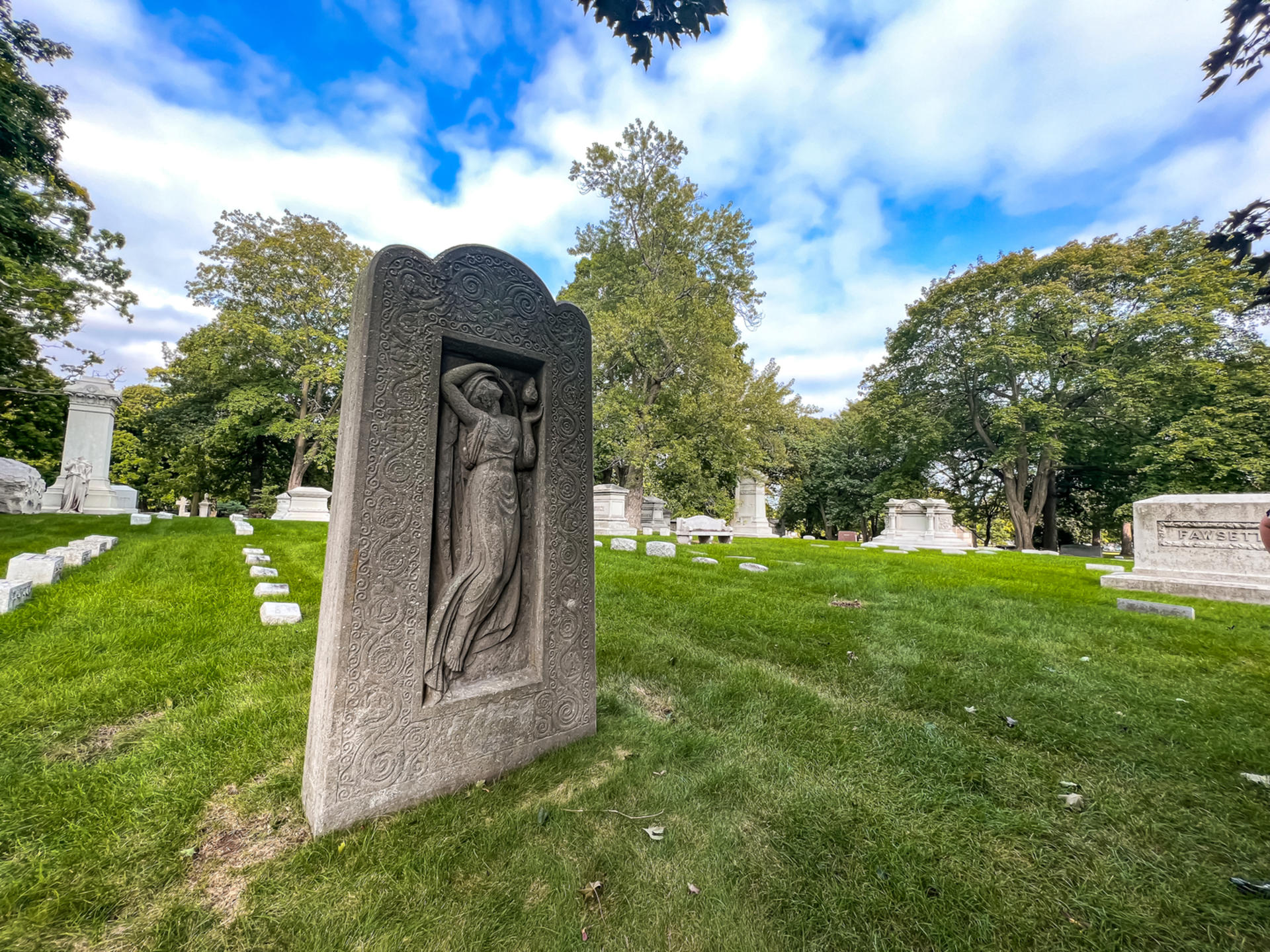
Byron Kilbourn’s return to Milwaukee was marked with a ceremony at City Hall, followed by a procession to Forest Home Cemetery. Mayor Norquist, Governor Dreyfus, members of the Third Masonic Temple alongside hundreds of local elected officials, school groups and members of the Milwaukee community were all on hand to pay their respects.
In the end, Mayor Norquist thanked Frank for his efforts to return Byron Kilbourn to the city he helped create.
Of his remarkable voyage and all the obstacles he faced along the way, Frank says simply, “Well, it was worth it.”
Today, Byron Kilbourn can still be found at Forest Home Cemetery and Frank can be found welcoming visitors and sharing his knowledge about the city at VISIT Milwaukee events all over town. Tour the historic final resting place of one of Milwaukee's foundational figures with a self-guided or private tour today to find Kilbourn and even more of the city's most famous residents.



